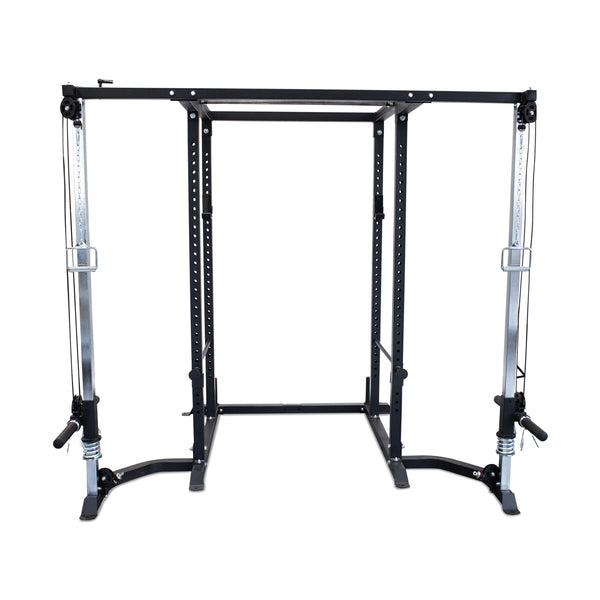If you're looking for a great exercise to target your rear deltoids and upper back muscles, try the reverse cable fly. This is a simple but effective movement that can help you improve your posture, balance your shoulder development, and add variety to your training.
A reverse cable fly is an isolation exercise that involves pulling two handles attached to a cable crossover machine or functional trainer from the front of your body to the sides, forming a T shape with your arms. This movement works mainly the rear deltoids, the back part of your shoulder muscles, and the rotator cuff, a group of muscles and tendons that stabilize your shoulder joint. It also works the trapezius, the large muscle that runs from your neck to your upper back.
To perform a reverse cable fly, you need access to a cable crossover machine with two handles attached to the upper pulleys. Here are the steps to follow:
- Reach across your body and grab the handle from the right side of the cable machine with your left hand and the left handle with your right hand. This will create a cross-over effect with the cables.
- Position yourself in the machine's center, facing away from it. Keep your arms straight ahead, your chest up, and brace your core. This is your starting position.
- Keep your elbows slightly bent and pull your arms backward until they are about parallel to your body. Squeeze your shoulder blades together at the end of the movement.
- Reverse the movement and return to the starting position. Repeat for reps.
As mentioned earlier, the reverse cable fly mainly works the rear deltoids and the rotator cuff. These muscles are responsible for horizontal shoulder abduction, which means moving your arm away from the midline of your body in a horizontal plane. The rear deltoids are often neglected or underdeveloped in many lifters, as they focus more on exercises that work the front and side deltoids, such as presses and raises.
The reverse cable fly can help balance your shoulder development and prevent injuries or imbalances. The rotator cuff is also crucial for shoulder health and stability, as it helps keep your shoulder joint in place and allows it to move in different directions. Strengthening the rotator cuff can improve your performance in other exercises that involve shoulder movements, such as bench presses, overhead presses, and pull-ups.
The reverse cable fly also works the trapezius, divided into three parts: upper, middle, and lower. The upper trapezius helps elevate your shoulder blades, while the middle trapezius helps retract them. The lower trapezius helps depress them. The reverse cable fly mainly works the middle trapezius, which helps pull your shoulder blades together and improve your posture.
The reverse cable fly is not a complicated exercise, but there are some common mistakes that you should avoid to prevent injury and get the most out of it. Here are some of them:
- Using too much weight: If you use too much weight, you will lose movement control and rely on momentum or other muscles to complete it. This will reduce the effectiveness of the exercise and increase the risk of injury. Use a weight that allows you to perform the exercise with good form and feel a strong contraction in your target muscles.
- Shrugging your shoulders: If you shrug your shoulders during the reverse cable fly, you will activate more of your upper trapezius and less of your rear deltoids and rotator cuff. This will defeat the purpose of the exercise and create tension in your neck. Keep your shoulders down and away from your ears throughout the movement.
- Flaring your elbows: If you flare your elbows too much during the reverse cable fly, you will reduce the range of motion and limit the activation of your rear deltoids and rotator cuff. You will also put more stress on your shoulder joint and increase the risk of injury. Keep your elbows slightly bent and aligned with your shoulders throughout the movement.
- Arching or rounding your back: If you arch or round your back during the reverse cable fly, you will lose stability and alignment in your core and spine. This will compromise your form and increase the risk of injury. Keep your back straight and neutral throughout the movement.



